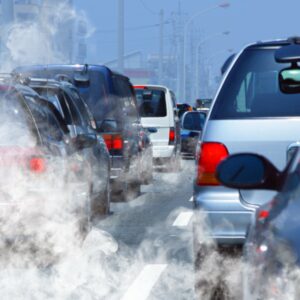Air pollution hits brains
 26 June 2013. Exhausts from automobiles contain multiple chemicals that may be toxic to brain cells. Carbon monoxide, nitrogen oxides, soot, and tar compounds. The most dramatic demonstration of the brain toxicity due to air pollution was carried out in Mexico City, where researchers used scanning techniques to document brain lesions in children and documented similar abnormalities in the brains of deceased pet dogs (see “Only one chance”, page 101). Since then, the evidence has been building.
26 June 2013. Exhausts from automobiles contain multiple chemicals that may be toxic to brain cells. Carbon monoxide, nitrogen oxides, soot, and tar compounds. The most dramatic demonstration of the brain toxicity due to air pollution was carried out in Mexico City, where researchers used scanning techniques to document brain lesions in children and documented similar abnormalities in the brains of deceased pet dogs (see “Only one chance”, page 101). Since then, the evidence has been building.
Among recent studies, 576 children from Cincinnati showed higher hyperactivity scores at age 7 years when their exposure to traffic-related air pollution at age 1 was increased. Similarly, 174 Boston children aged 7-14 years showed signs of attention deficit at greater lifetime exposure to air pollution, as determined by the amount of soot (carbon black) in the air.
Despite all of the studies available, we still do not know which exhaust components are driving the brain drain. Perhaps the soot is an indicator for something else, perhaps a combination of chemicals are causing the damage. Like tobacco smoke (see “Only one chance”, page 100), air pollution contains a multitude of potentially brain-toxic chemicals, and it is far from clear which ones may be causing the toxicity to brain development. Further, air pollution differs depending on the source, season, latitude and other factors.
There is also a statistical problem in interpretation. The different reports have emphasized various air pollutants or combined measures. Some may have been assessed with substantial imprecision, and a statistical consequence is that such pollutants will appear less toxic than they really are. Thus, those that are measured or estimated with good precision will seem to cause the adverse effects, rather than those exposures that are more uncertain. For this reason, we are still far from knowing how air pollution damages brain development and which components are the worst in this regard.
That does not mean that air pollution is an uncertain contributor to chemical brain drain. On the contrary, the uncertainty means that we are likely underestimating the magnitude of the problem. Air pollution is already considered a serious public health problem due to cardiopulmonary diseases. Toxicity to developing brains adds to the public health imperative of controlling this pollution.
